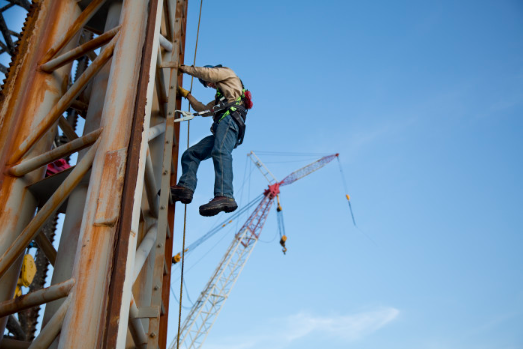
The old saying that you get what you pay for is especially true when we are talking about the most comfortable work harnesses. While there are hundreds of harnesses on the market that meet OSHA and ANSI standards, most of them fail to meet basic standards of comfort.
For instance, the most economical fall protection harness we carry at pksafety.com is the Protecta AB17510. It's a fine harness if an OSHA inspector shows up on the job site. It's a basic, functional, 3-point harness that, if properly worn and rigged with other fall safety devices, will stop you before you impact in a too-quick manner with the ground.
But let's be honest, the AB17510 is a harness for passing the occasional inspection more than for someone who works all day at-height. Working in fall protection gear all day means a fair amount of chaffing if you your harness isn't designed for movement. Or it means wearing your harness loose, which you see quite a bit on sites around our home base. This is sort of like pulling your seatbelt over your arm when you drive so it looks like you are strapped in - it just won't help you when it's supposed to.
The next step up in climbing comfort is probably one of the Delta harnesses. One of the most important things to consider for comfort in a harness is how the dorsal D-ring is configured. If those back straps are held in place, like they are with the DBI-SALA 1102008 Delta II Full Body Harness the harness won't twist so much. It'll be easier to put on, and the straps will be inclined to stay where they are supposed to, instead of moving as you work.
The ExoFit line of harnesses is another big step up in at-height comfort. Harnesses like the Exofit X200 D-Ring Harness are designed and sewn to wrap comfortably around the worker. The edges of the straps have soft neoprene for added comfort and the leg straps are covered in mesh to help keep the wearer cooler and limit chaffing.
When you get to the high end of harnesses like the ExoFit line from DBI-SALA or the AVAO harness from Petzl, they are all going to be pretty comfortable, and it becomes more a matter of personal preference. In general, the Petzl harnesses are thought to be more for actual climbing and getting to (and back from) tough-to-reach spots. Their straps meet in a central point and hook with a carabiner in front. This means they really move with you as you climb, and the straps all tend to stay in place.
Of course the higher-end harnesses are also more comfortable when you actually take a fall. Hopefully you never do. But for what it's worth, we think you'd be more comfortable in an ExoFit than a standard Protecta harness if you are hanging at the end of a lanyard.
